Forums
- Forums
- Duggy's Reference Hangar
- USAAF / USN Library
- Stearman XA-21
Stearman XA-21
Post a reply
- Go to Previous topic
- Go to Next topic
- Go to Welcome
- Go to Introduce Yourself
- Go to General Discussion
- Go to Screenshots, Images and Videos
- Go to Off topic
- Go to Works in Progress
- Go to Skinning Tips / Tutorials
- Go to Skin Requests
- Go to IJAAF Library
- Go to Luftwaffe Library
- Go to RAF Library
- Go to USAAF / USN Library
- Go to Misc Library
- Go to The Ops Room
- Go to Made in Germany
- Go to Campaigns and Missions
- Go to Works in Progress
- Go to Juri's Air-Raid Shelter
- Go to Campaigns and Missions
- Go to Works in Progress
- Go to Skinpacks
- Go to External Projects Discussion
- Go to Books & Resources
-
 Main AdminIn 1929, the United Aircraft and Transport Corporation was formed with headquarters at Hartford, Connecticut as a large holding company that controlled the stock of the Boeing Airplane Company of Seattle, its Canadian subsidiary based in Vancouver B.C., the Boeing Air Transport airline subsidiary of Boeing, as well as the Chance Vought Corporation, the Hamilton Aero Manufacturing Company (a propeller manufacturer) and the Pratt & Whitney Aircraft Company, the well known engine manufacturer. In an arrangement that would be considered as being grossly non-competitive today, one holding company now controlled airlines, engine and airframe manufacturers, as well as propeller suppliers. Sikorsky Aviation Corporation, the Stearman Aircraft Company of Wichita, Kansas, and the Standard Steel Propeller Company were added to United's empire shortly thereafter, followed by several more airlines brought into the fold. The airline interests were soon grouped under a new management company known as United Air Lines, Inc. However, the individual airlines (as well as the individual companies held by United) continued to operate under their own names.
Main AdminIn 1929, the United Aircraft and Transport Corporation was formed with headquarters at Hartford, Connecticut as a large holding company that controlled the stock of the Boeing Airplane Company of Seattle, its Canadian subsidiary based in Vancouver B.C., the Boeing Air Transport airline subsidiary of Boeing, as well as the Chance Vought Corporation, the Hamilton Aero Manufacturing Company (a propeller manufacturer) and the Pratt & Whitney Aircraft Company, the well known engine manufacturer. In an arrangement that would be considered as being grossly non-competitive today, one holding company now controlled airlines, engine and airframe manufacturers, as well as propeller suppliers. Sikorsky Aviation Corporation, the Stearman Aircraft Company of Wichita, Kansas, and the Standard Steel Propeller Company were added to United's empire shortly thereafter, followed by several more airlines brought into the fold. The airline interests were soon grouped under a new management company known as United Air Lines, Inc. However, the individual airlines (as well as the individual companies held by United) continued to operate under their own names.
In the 1930s, the US government concluded that such large holding companies as the United Aircraft and Transport Corporation were basically anti-competitive, and new laws were passed forbidding airframe or engine manufacturers from having interests in airlines. The United Aircraft and Transport Corporation was broken up into several pieces, with Pratt & Whitney, Sikorsky, Vought and the now-merged Hamilton Standard Propeller Company being organized into a new United Aircraft Corporation, and the airlines going to the newly-organized United Air Lines Transport Corporation. The Boeing Airplane Company again became an independent organization, with the Stearman company as a subsidiary.
For the next few years, Stearman operated as a more-or-less independent company, and introduced the famous Model 75 series of two-seat trainers. On April 8, 1939, the Stearman plant at Wichita, Kansas was officially made a division of Boeing, and the Stearman name disappeared. However, the original Stearman model designations and serial numbering systems were retained.
In 1937, the Army's Materiel Division began to investigate the possibility of the development of a twin-engined attack bomber with a performance that would greatly exceed that of the single-engined types such as the Northrop A-17 that were currently in service. In March 1938, the Air Corps issued Circular Proposal Number 38-385 that defined the requirements. Payload was to be 1200 pounds, and range was to be 1200 miles at speeds greater than 200 mph. The Army invited all of the contestants to build prototypes of their designs at their own expense for a design competition. The deadline for the entries would be March 17, 1939.
Proposals were submitted by Bell, Douglas, Martin, North American, and Boeing-Stearman. Bell's Model 9 proposal called for an aircraft powered by two liquid-cooled Allison engines. It was withdrawn from the competition before anything could be built. The Douglas entry was the Model 7B, a high-winged monoplane powered by a pair of 1100 hp Pratt & Whitney R-1830 Twin Wasp radials. Martin submitted its Model 167F, a twin-engined mid-wing monoplane. The North American entry was designated NA-40 by the company and was a high-winged aircraft carrying a crew of five--pilot, copilot, bombardier/navigator, radio operator/gunner, and gunner.
Stearman's entry in the competition was designated Model X-100. It was a three-seat high-winged monoplane powered by a pair of untried Pratt & Whitney R-2180 radials. The X-100 was the first twin-engined design built by Stearman, and was the first all-metal aircraft and the first monoplane to be produced by the company. The Stearman company had begun work on the X-100 in 1938, and the project was completed after the company officially became a division of Boeing.
The normal crew of the Model X-100 was three--a bombardier, a pilot, and a radio operator/gunner. The bombardier and pilot sat in tandem underneath a transparent canopy in a smooth contour nose. The radio operator/gunner sat in a separate transparent cabin at the rear of the fuselage and controlled manually-operated turrets in the dorsal and ventral positions. The rear gunner could operate four 0.30-inch machine guns--one in a manual dorsal turret, one mounted on each side firing from a flexible socket, and one fitted inside a ball-shaped flexible socket mounted on the bottom of the fuselage. Provision was made for a fourth crew member to assist in operating the defensive machine guns. The Model X-100 incorporated an electrically-actuated retractable undercarriage, integral fuel tanks, fully-feathering constant-speed propellers, and sealed compartments in the outer wing panels, central fuselage, and empennage for flotation in case of a forced landing on water. The mainwheels retracted rearward into wells in the rear of the engine nacelles, and the tailwheel was retractable as well. The wing trailing edge carried Fowler-type flaps both inboard and outboard of the engine nacelles. The engine was the new and untried Pratt & Whitney R-2180-S1A1-G radial, rated at 1150 hp at 2350 rpm, but capable of delivering 1400 hp at 2500 rpm for takeoff.
In the interest of aerodynamic streamlining, the original nose contour of the X-100 formed an unbroken line with the top of the fuselage, forcing the pilot to have to look forward through the bombardier's station. In search of a better forward view for the pilot, the nose was modified during the flight test phase to the standard step-down windshield configuration used by most contemporary bombers and transports.
Both the North American and the Douglas designs crashed before they could be entered in the contest, leaving only the Stearman and Martin entries actually submitted to the Army for flight testing. However, none of the entries succeeded in landing any Army contracts. Instead, the Army waffled and in April of 1939 they called for a new contest in which a new set of design proposals would be requested and evaluated without the need for the construction and testing of prototypes. All of the original contestants, including Boeing-Stearman, submitted new bids in response to this new contest. On June 30, 1939, the Army decided in favor of the Douglas DB-7, which was a revised version of the Model 7B that had crashed during flight test. 123 examples were ordered under the designation A-20.
Although no production was anticipated, the Army did purchase the X-100 prototype under the designation XA-21. The serial number was 40-191. The aircraft was delivered to the Army in September of 1939. The Army carried out some tests with the aircraft, but no further development was pursued. I am unaware of the ultimate fate of the XA-21. Presumably it was scrapped.
The other two unsuccessful contestants in the attack bomber competition did not share the same unhappy fate as the XA-21. Although the US Army only bought one example of the Martin 167 (under the designation XA-22), the aircraft succeeded in landing substantial export contracts with France and later served with the Royal Air Force under the name Maryland. Although the Army did not even buy one example of the North American NA-40 (it crashed during testing), the basic design was later adapted to a medium bomber configuration, evolving into the famous B-25 Mitchell.
Text from here - http://www.joebaugher.com/usattack/a21.html
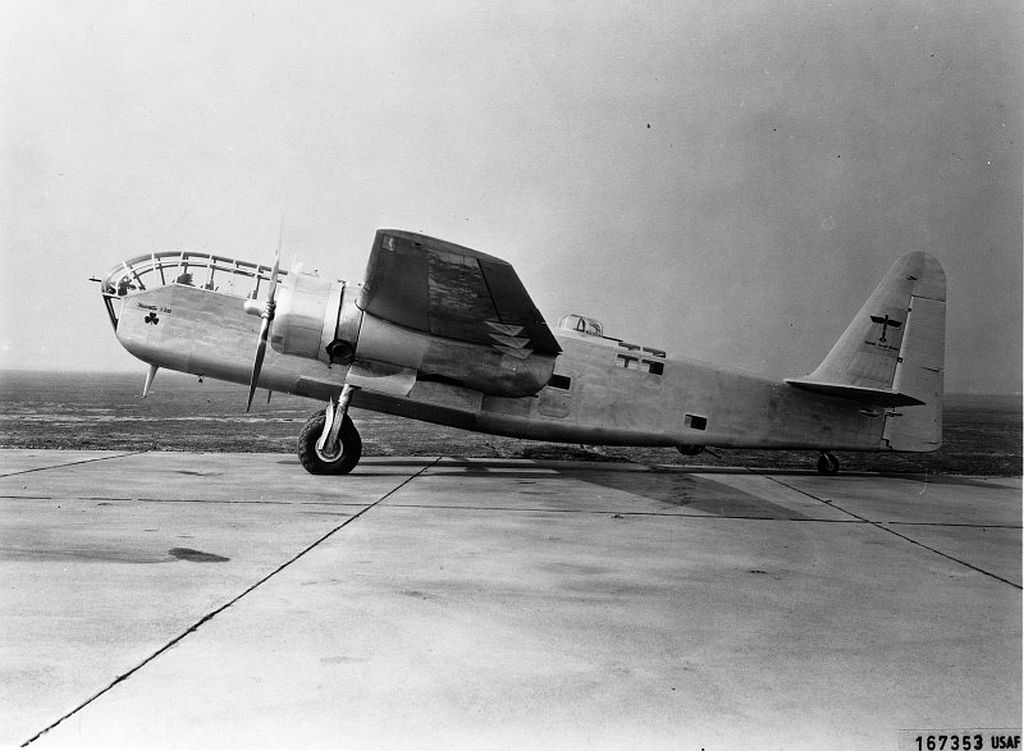


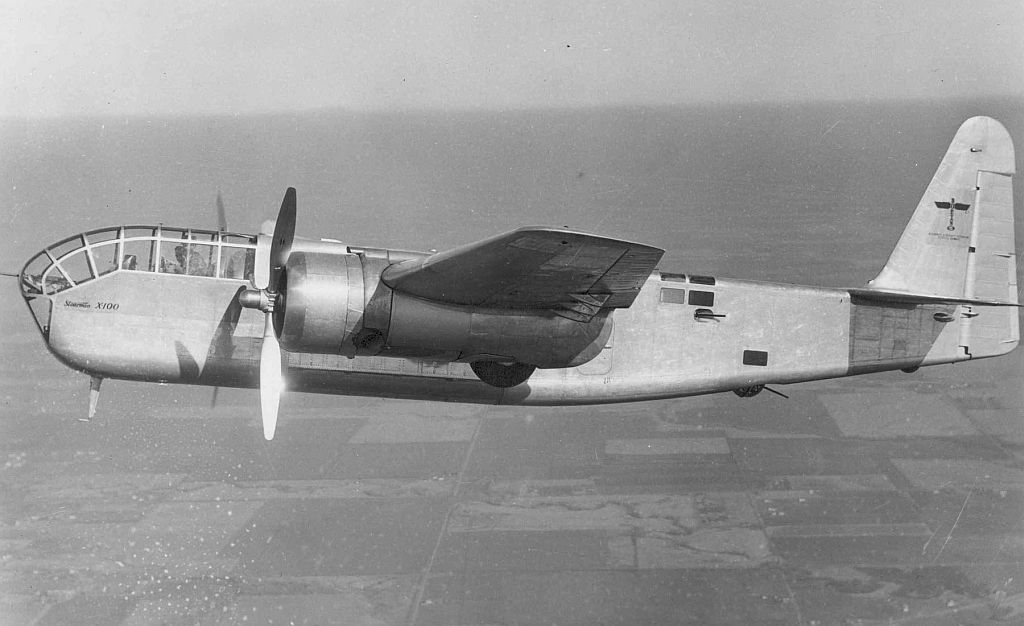
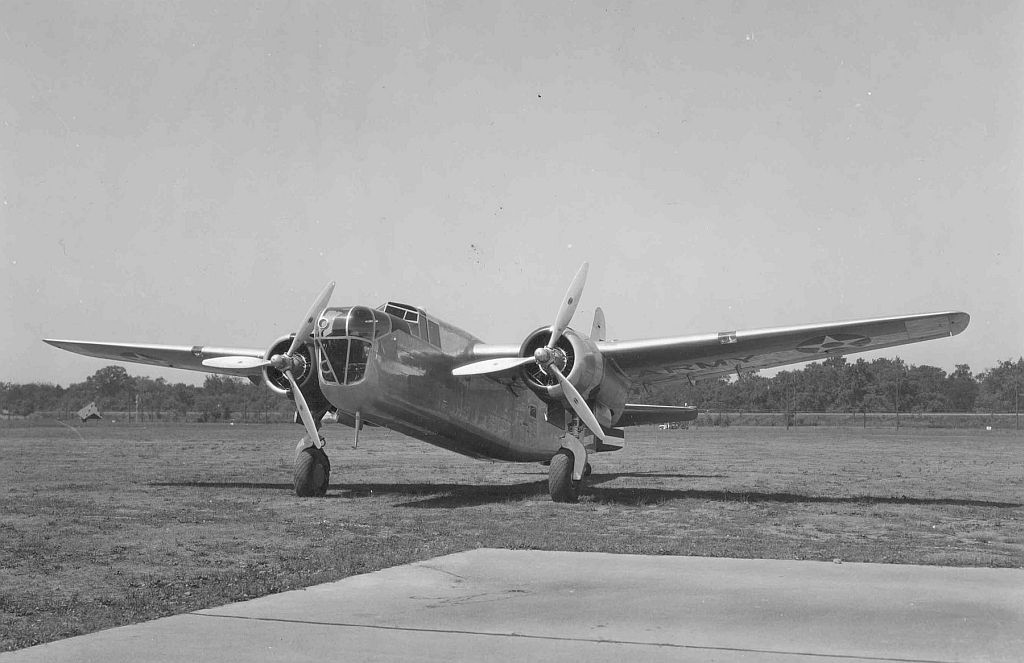
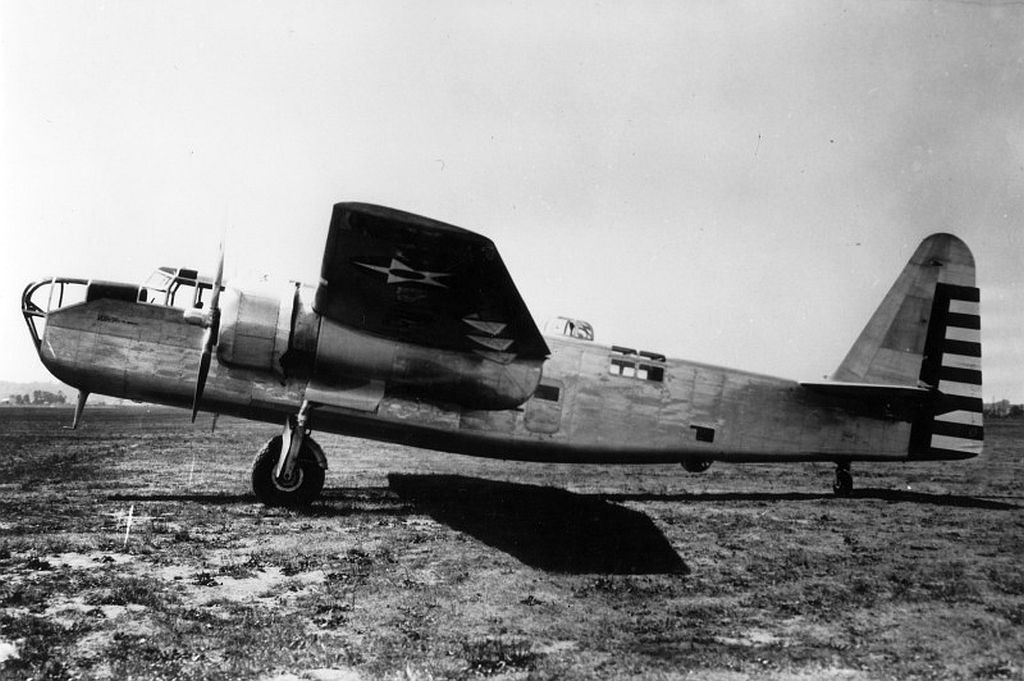
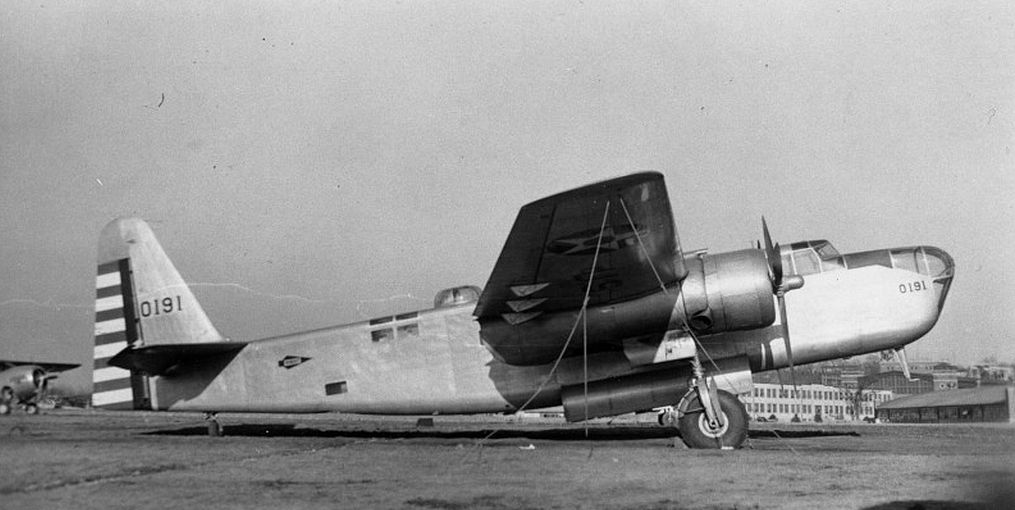
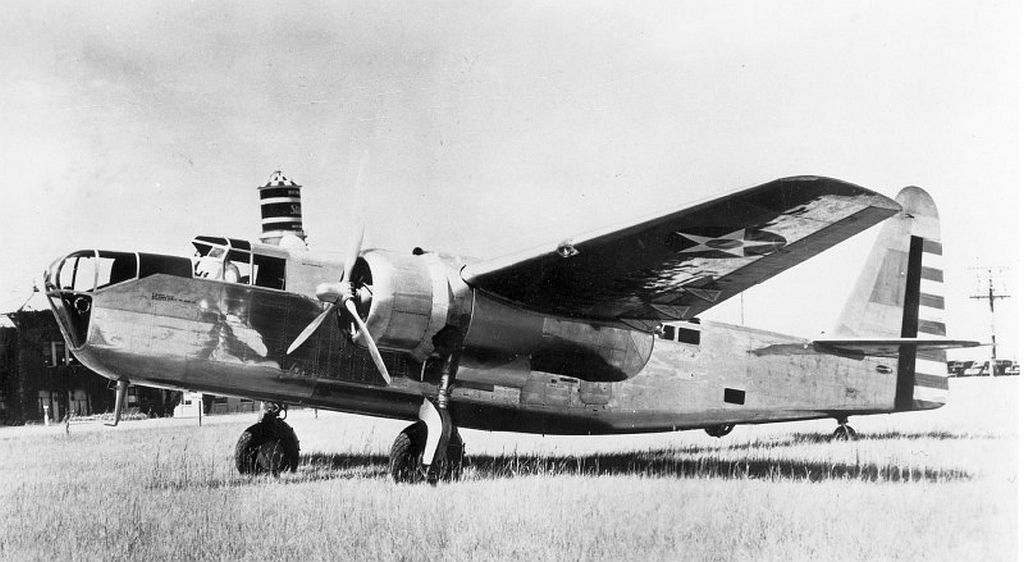
Specification of the Boeing-Stearman XA-21
Engines: Two Pratt & Whitney R-2180-7 radials, each rated at 1150 hp at 2350 rpm, but capable of delivering 1400 hp at 2500 rpm for takeoff. Performance: Maximum speed 257 mph at 5100 feet. Cruising speed 200 mph. Landing speed 72 mph. Service ceiling 20,000 feet. Range 720 miles with 1200 pound bombload. Maximum range 1500 miles. Weights: 12,760 pounds empty, 18,230 pounds gross. Dimensions: Wingspan 65 feet, length 53 feet 1 inch, height 14 feet 2 inches, wing area 607 square feet. Armament: One 0.30-inch machine gun in a flexible mounting in the nose. The rear gunner could operate four 0.30-inch machine guns--one in a dorsal turrret, one on each side firing from a flexible socket, and one in a fixture on the bottom. Four forward-firing 0.3-inch machine guns could be installed in the wing. Maximum bombload 2700 pounds. Sources: Boeing Aircraft Since 1916, Peter M. Bowers, Naval Institute Press, 1989. McDonnell Douglas Aircraft Since 1920, Vol 1, Rene J. Francillon, Naval Institute Press, 1988
Post a reply
- Go to Previous topic
- Go to Next topic
- Go to Welcome
- Go to Introduce Yourself
- Go to General Discussion
- Go to Screenshots, Images and Videos
- Go to Off topic
- Go to Works in Progress
- Go to Skinning Tips / Tutorials
- Go to Skin Requests
- Go to IJAAF Library
- Go to Luftwaffe Library
- Go to RAF Library
- Go to USAAF / USN Library
- Go to Misc Library
- Go to The Ops Room
- Go to Made in Germany
- Go to Campaigns and Missions
- Go to Works in Progress
- Go to Juri's Air-Raid Shelter
- Go to Campaigns and Missions
- Go to Works in Progress
- Go to Skinpacks
- Go to External Projects Discussion
- Go to Books & Resources
